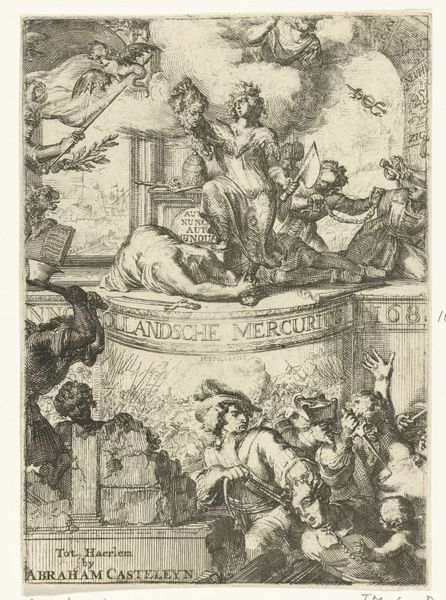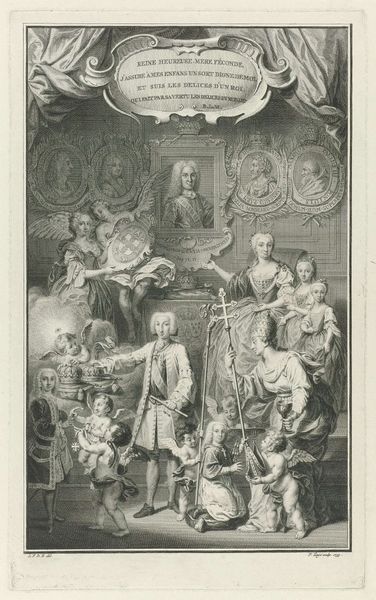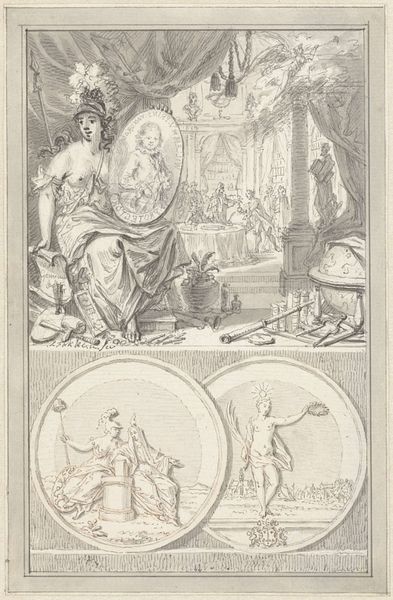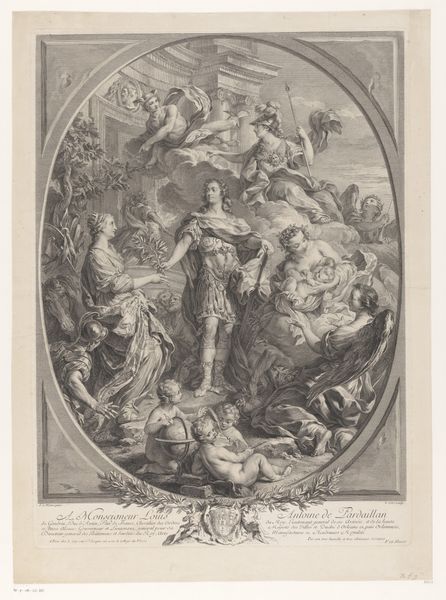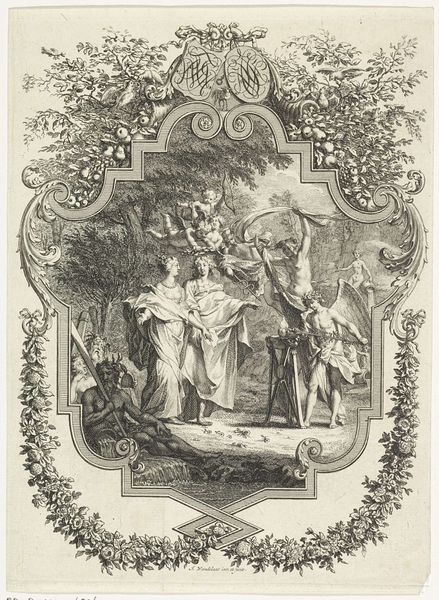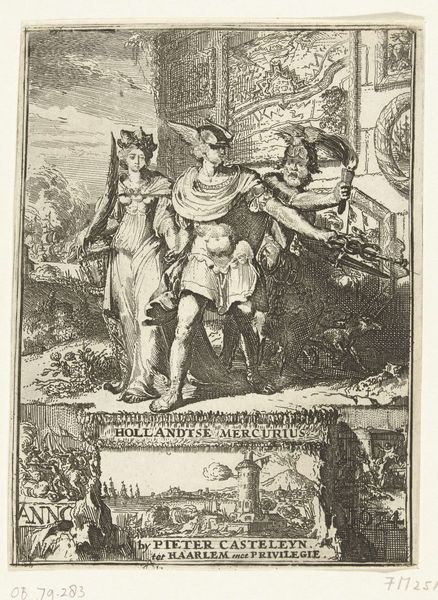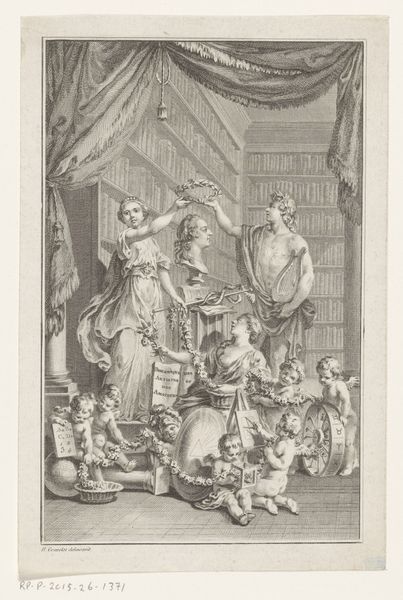
print, engraving
#
allegory
#
baroque
#
symbol
# print
#
old engraving style
#
form
#
line
#
history-painting
#
engraving
Dimensions: height 473 mm, width 683 mm
Copyright: Rijks Museum: Open Domain
Curator: Look at this print by Romeyn de Hooghe, dating from 1674-1675, titled "Allegorie op de overwinningen en vrede in 1674." Editor: My first impression is that this is a chaotic celebration, packed with figures and symbols. The eye really struggles to find a place to rest. Curator: Absolutely. The density speaks volumes about the prosperity and social structures tied into wartime economies. Note the crispness of the engraving technique, a painstaking process crucial for disseminating political messages widely and quickly during that era. It's more than just an aesthetic choice; it's about production and control. Editor: For me, it's the overwhelming display of iconography that stands out. What does this visual language tell us? The central figure seems to be some sort of military leader, surrounded by symbols of victory and prosperity. And the Latin inscriptions… What stories do they want to tell? Curator: This type of imagery was currency; power projecting its perceived narrative of the world and manipulating consumption by wealthy citizens. See the paper, ink, tools needed and workshops used… it gives us insight into not only art, but labour relations and colonial networks in the Golden Age. Editor: Yes, and let's look at that. Consider the map barely visible under the central figure's feet and all around...a literal declaration of territory and influence! Curator: Indeed. It’s hard to consider aesthetics and meaning separate from its function in state building. These printed images played a very important role in constructing identity and shaping society through mass production. Editor: All of those elements combined—the classical references, the celebration of military might—served to solidify the ruler’s position as a legitimate, divinely ordained leader. So many layers, so many stories packed into a single image meant for wide distribution! Curator: It's truly fascinating to unravel these material connections. Examining the production of pieces such as this one can bring forward a complex socio-economic context we need to address in order to fully grasp it. Editor: Analyzing the symbolic language employed in works like this helps unlock our understanding of both period propaganda and historical context. The combination of both illuminates the artwork in unique ways.
Comments
No comments
Be the first to comment and join the conversation on the ultimate creative platform.

